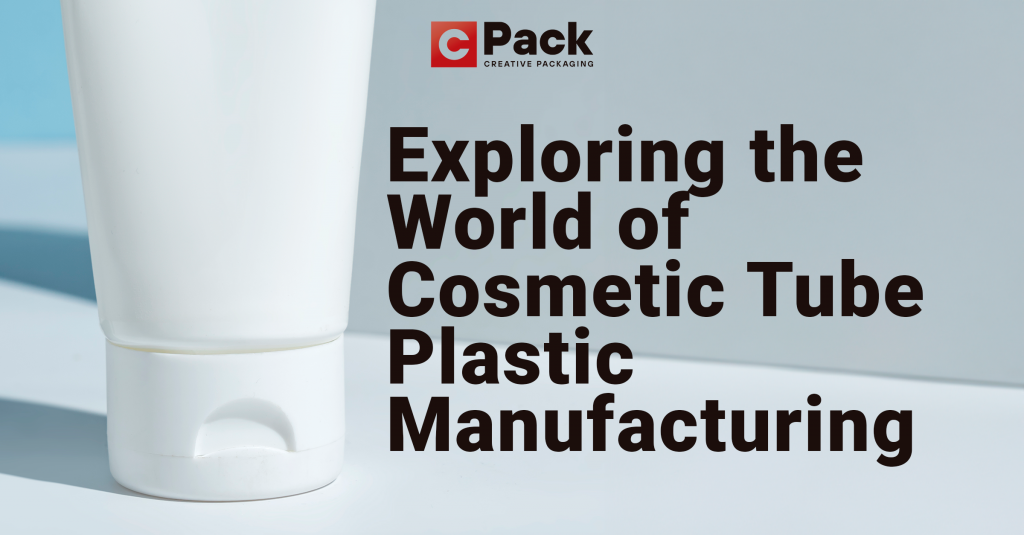
The Science Behind Cosmetic Tube Plastic Manufacturing: An In-Depth Exploration
In the beauty industry, packaging plays a crucial role in attracting consumers and preserving product integrity. One popular packaging solution for cosmetics is the cosmetic tube. These sleek and versatile containers offer convenience, portability, and protection for a wide range of cosmetic products. In this blog post, we will delve into the fascinating world of cosmetic tube plastic manufacturing, exploring the materials used, the manufacturing process, and the best plastic options for cosmetics.
What Material is Used for Cosmetic Tubes? Cosmetic tubes are typically made from various types of plastic materials. Commonly used plastics include polyethylene (PE), polypropylene (PP), and polyethylene terephthalate (PET). These materials are preferred for their durability, flexibility, and compatibility with different formulations.
How are Cosmetic Tubes Made? The manufacturing process of cosmetic tubes involves several stages. It starts with plastic resin pellets being melted and extruded into a tubular shape. The molten plastic is then shaped using molds and cooled rapidly to solidify. Afterward, the tubes undergo trimming, shoulder formation, printing, and finally, sealing. These processes ensure the creation of high-quality cosmetic tubes that meet industry standards.
What is Cosmetic Tube? A cosmetic tube is a cylindrical container primarily used for packaging various cosmetic products, such as creams, lotions, gels, and serums. These tubes feature a squeezable body and a dispensing nozzle or cap, allowing users to easily control the amount of product they dispense. Cosmetic tubes are designed to be user-friendly, hygienic, and aesthetically appealing.
What is the Best Plastic for Cosmetics? When it comes to selecting the best plastic for cosmetics, it depends on the specific requirements of the product. Polyethylene (PE) is a popular choice due to its excellent moisture barrier properties, chemical resistance, and compatibility with a wide range of formulations. Polypropylene (PP) offers good impact resistance and stability, making it suitable for products that require higher durability. Polyethylene terephthalate (PET) is commonly used for transparent or lightweight cosmetic tubes, as it provides clarity and strength.
What Plastic is Used for the Beauty Industry? The beauty industry often utilizes various plastics for packaging, including the aforementioned PE, PP, and PET. Additionally, materials like polystyrene (PS), acrylonitrile butadiene styrene (ABS), and polycarbonate (PC) may be used for specific packaging requirements. Each plastic offers unique properties that cater to different cosmetic products, ensuring optimal performance and consumer satisfaction.
How are Packaging Tubes Made? Packaging tubes, including cosmetic tubes, are manufactured using advanced techniques. As mentioned earlier, the process involves extruding plastic resin into a tubular shape. The tubes can be customized in terms of size, shape, and features. Once the tube body is formed, it goes through printing and labeling processes to display branding and product information. The tubes are then sealed with caps or nozzles, ensuring product integrity and preventing leakage.
Key Insights from the World of Cosmetic Tube Plastic Manufacturing…
In conclusion, cosmetic tube plastic manufacturing plays a vital role in the beauty industry, providing effective and visually appealing packaging solutions. The materials used, such as polyethylene, polypropylene, and polyethylene terephthalate, offer durability and compatibility with various cosmetic formulations. With precise manufacturing processes, cosmetic tubes are created to meet industry standards, allowing for easy dispensing and optimal product protection. The ongoing advancements in plastic manufacturing continue to drive innovation in cosmetic packaging, providing both consumers and brands with exceptional products.

